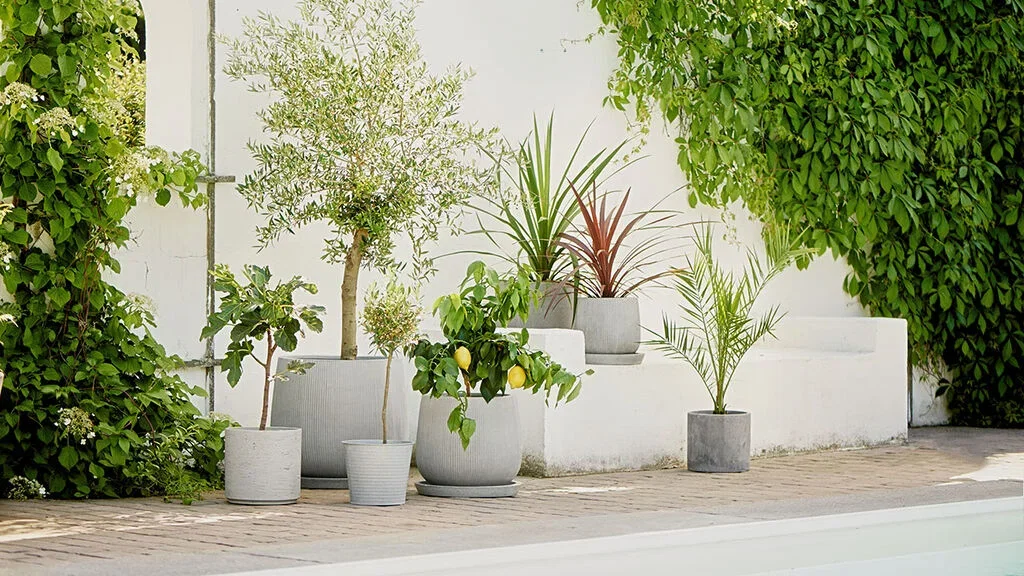How to overwinter Mediterranean plants like citrus and olive trees
When nights grow cooler and frost approaches, it's time to bring in Mediterranean plants like figs, citrus, and olive trees. But simply moving them indoors isn't enough—they want a winter resembling that of the Mediterranean. Here’s how you can easily create subtropical conditions at home.

Winter is the resting period for plants, but keeping plants from southern latitudes alive through the winter can sometimes be challenging. The lack of light is a major factor, and perhaps that's not surprising: in Zanzibar, for example, light levels on a typical winter day are around 200,000 lux, whereas a Nordic living room typically has just 500–800 lux.
It's simply too dark here—and often too warm indoors relative to the sparse available light. Luckily, we can still help these plants survive by using a few clever tricks.
Overwintering olive trees
Olive trees can tolerate a few degrees below freezing in the short term, but they won't survive prolonged cold. A garage with a grow light, or a glassed-in balcony with a frost guard, often works well for winter storage. The ideal temperature is between 5 and 10 degrees Celsius.
Olive trees also prefer as much light as possible, so feel free to supplement with additional lighting, such as a grow lamp.
When it comes to watering, keep it sparse and avoid adding nutrients—but never allow the soil to dry out completely. Spray water around the crown, or use a humidifier for a couple of hours each day to raise humidity.
Olive trees should retain their leaves throughout winter, but sometimes leaves can drop due to unsuitable conditions. If your tree feels cold and you're uncertain whether it's alive, scrape the bark gently with your fingernail—if it’s still alive, the trunk beneath should appear green.
In springtime, repot your olive tree using fresh soil specifically formulated for Mediterranean plants. This will give your tree the best possible start, just like in an ancient Greek garden.

Overwintering citrus trees
Citrus trees originate from tropical and subtropical climates and will die if exposed to freezing temperatures. To thrive through winter, they require a certain amount of warmth—optimally between 5 and 15 degrees Celsius—and plenty of light.
Many varieties can manage to survive on a windowsill, but ideally, citrus plants should overwinter in spaces like glazed balconies or conservatories, where temperatures can remain consistently favorable. If the citrus tree is placed in a window, avoid rotating the plant—it naturally turns its leaves towards the light, and shifting directions requires significant energy.
Citrus trees may shed their leaves if watered too much, too little, or if there's a large temperature difference between their roots and the crown. Therefore, avoid placing the pot directly on a cold floor. Dry air and insufficient light can also cause leaf drop.
During winter, citrus trees should be watered sparingly, without added nutrients—but they must not completely dry out. Occasionally spraying the leaves with water is beneficial.
Overwintering figs
The fig tree is a fantastic plant, which also produces delicious fruit. One great advantage of fig trees is that they can overwinter in darkness—for example, in a garage or basement—since they naturally shed their leaves during winter.
The ideal temperature for winter storage is between 2 and 5 degrees Celsius, and preferably not above 10 degrees. Although it's possible to keep fig trees in a window during winter, they easily dry out, become susceptible to insect infestations, and won’t bear fruit during cold periods.
Like most Mediterranean plants, figs prefer slightly moist conditions. Water sparingly, avoid adding nutrients, and occasionally mist the leaves with water. In spring, you can prune the plant, and repot it every third year.
Not all fig varieties produce fruit during our short summers, but a hardy variety called "Bornholm fig" can survive outdoors in warmer climates once established.
Think humid, cool and bright
It might seem like a lot to keep track of, but if you forget something, it’s not the end of the world. Just think about it this way: how does it actually feel in Spain or Italy on a December day? It's that humid, cool, and bright environment you should aim for. Get this right, and next summer you'll be enjoying home-grown clementines, olives, and fresh figs like never before.

Swedish garden inspirer, journalist and author of books about nature, cultivation and animals, such as "Soil", "Grow for insects" and "Chickens as a hobby".
Read more:
You are here:








